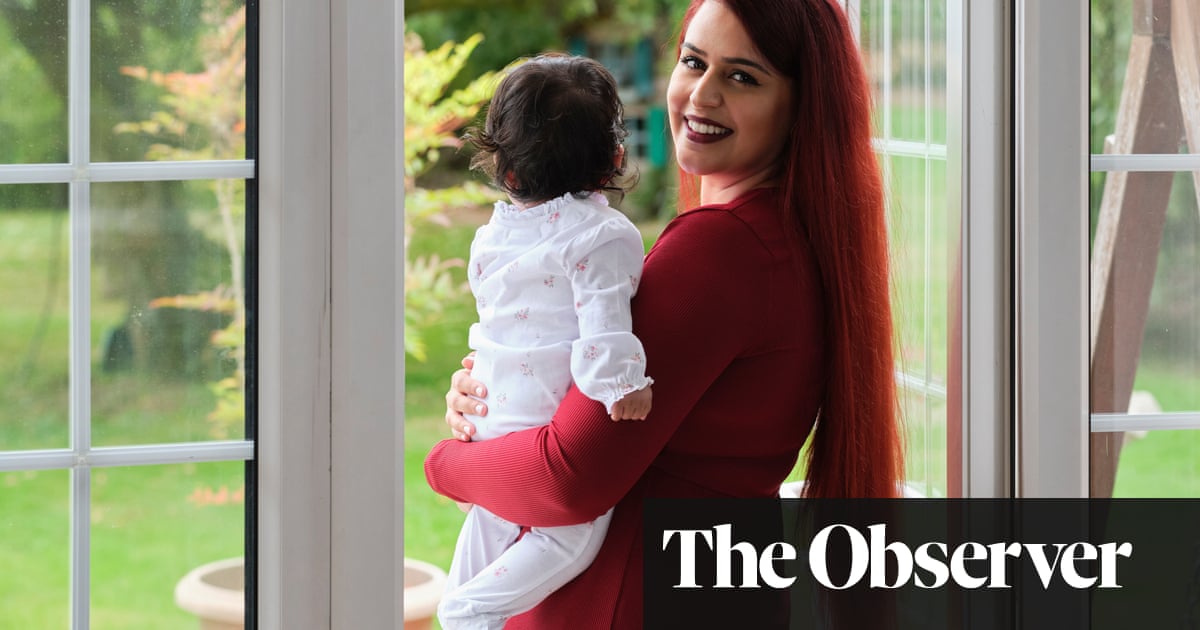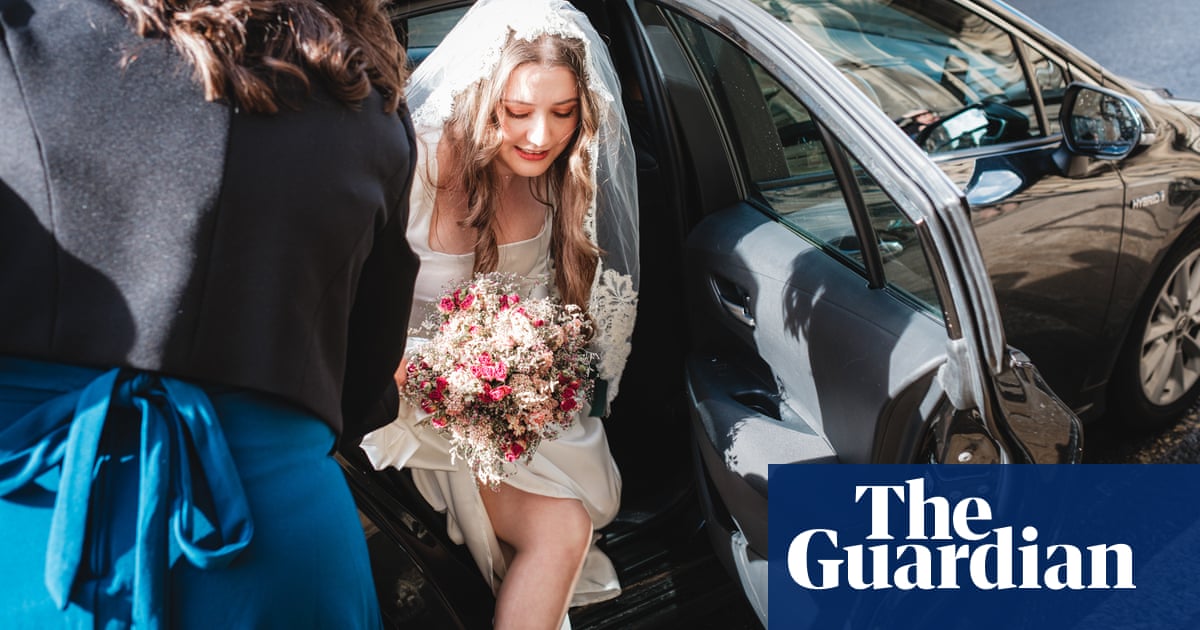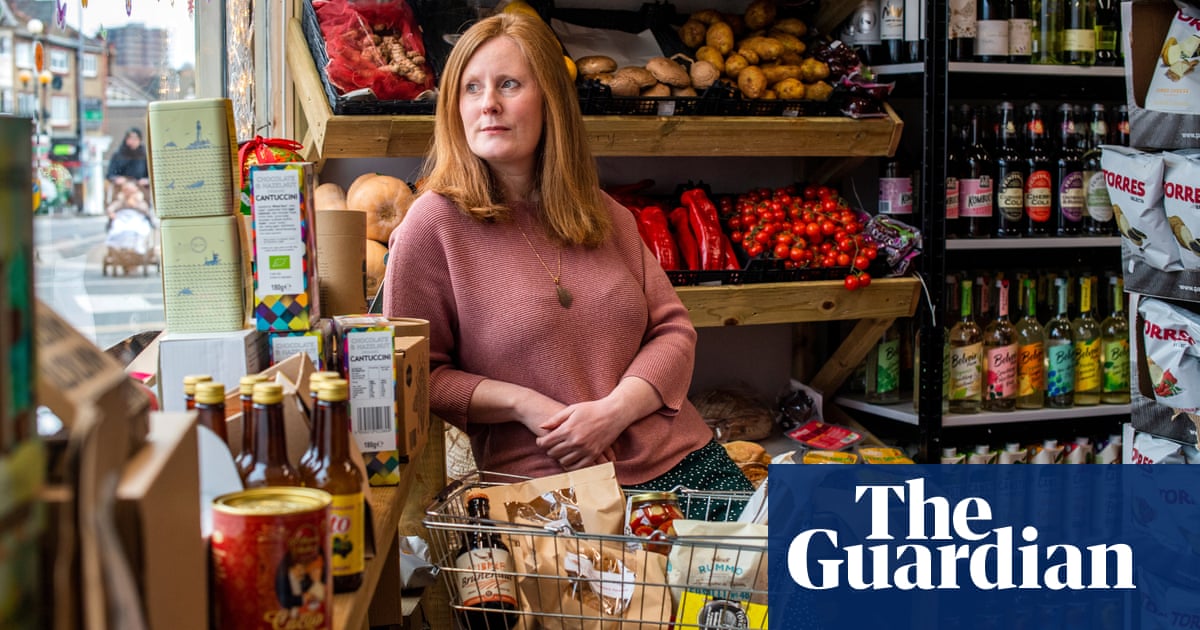
Every Sunday, Jaspreet Kaur’s mother would rub oil into her daughter’s scalp and comb it through her hair while sharing stories of their family’s history. “The oiling of the hair was a precious time when women caught up and connected to their roots in the stories we were told, the songs we’d sing,” Kaur says. The award-winning spoken-word artist, writer and teacher explains that the Sanskrit word sneha not only means “to oil” but also “to love”.
When Kaur started secondary school, at the age of 11, the oil in her hair along with the fragrant scent of tarka (spice-infused oil) on her blazer that no amount of Impulse body spray could mask attracted negative attention from other girls who ridiculed her and made comments such as “stinks of curry” and “greasy hair”. From that day, she made the decision to no longer have her hair oiled.
This and other experiences of feeling as if she had to distance herself from her culture, hide part of herself away, led her to write her recent memoir, Brown Girl Like Me, about growing up as a South Asian woman in Britain. “I’m now in a place where I want to learn who I am and understand why I felt the way I did,” Kaur says, from her London home while her five-month-old daughter naps nearby. “I want to live more authentically and own all the different parts of my intersectional identity. I don’t want to feel ashamed any more.” Her book is not simply a memoir, but a manifesto and guide to navigating a range of topics that brown woman face today, from family and education to the complexities of the workplace and beauty standards.
“I write about this idea of a cultural diasporic journey that a lot of us end up going on,” says Kaur, who for the early years of her life grew up in a intergenerational home speaking mainly Punjabi. “Up to the age of four or five, we were very connected to our culture, identity, faith and families, because this is our whole world at that point.” Things changed when she went to school, especially later in her teenage years, when everyone is trying to fit in and assimilate into their environment. “I started to distance myself from my culture. I wanted to be as western as possible, even if that meant letting go of some of my cultural traditions.”
As a child growing up in east London, she saw no shortage of formidable and strong South Asian women within her family and local community. She did not see this representation in popular culture. “In the late 90s and early 2000s, it felt as if brown girls were completely ignored in mainstream media, in films, in TV, in books. I couldn’t see us in the classroom, nor could I see us in terms of what we were learning at school, and that made no sense because I knew Asian women were a big part of British society and had been for decades. So why were we being ignored? Why was it that when we did see Asian women, in a sitcom, say, we would always be depicted as docile, weak and submissive?”
As a brown girl myself, with English as a second language, I recognise much of my own experience reflected within the pages of Kaur’s memoir, in particular, the tension found in reconciling one’s cultural heritage with a need to assimilate.
In 2017, while marking exam papers in her job as a high school history and sociology teacher, Kaur received an email inviting her to give a TEDxLondon talk. She had been writing to make sense of her feelings since the age of 13, but had only been performing and sharing her work online for a year before the email arrived. Her talk, How Poetry Saved My Life, was about how using creative expression and writing supported her mental health journey. She left teaching shortly afterwards to focus on her work as a writer, poet and performer. She also now works as an educator to tackle issues related to gender discrimination, mental health stigma and the postcolonial immigrant experience.
While Kaur has a diverse career spanning academia and the arts, her memoir acknowledges the complex conversation surrounding the negative and limiting effect that stereotypes can have on career opportunities. “Pakistani and Bangladeshi women have an inactivity rate of about 60%, which means around half of them aren’t in the labour force,” Kaur says. “We know the media often portrays this idea that Muslim or Pakistani women don’t work because their faith and culture doesn’t allow it, but in reality, this isn’t the case.”
Kaur writes on how microaggressions, such as not having your name pronounced correctly, can have a cumulative effect on how brown women view and value themselves in society. “Imagine a microaggression as a tiny paper cut – you won’t bleed to death. But imagine getting 10 paper cuts a day – your hand would really hurt.” She explains that what others perceive as subtle or trivial, in fact, exacts a huge toll. There is this feeling that the effect is subtle, but “Imagine if it’s happening on a daily basis and what that’s doing to your mind and your body as you navigate the world.”
Kaur emphatically encourages brown women in all careers and vocations to be more visible to inspire younger generations. “Doctors, dentists, lawyers are all wonderful professions, and I understand why, coming from immigrant families, we are being pushed in the direction of financial security,” she says. “But how do we make sure we are diversifying the industries we’re going into so that we are taking up space and telling our stories?” Kaur regularly visits schools to show young brown girls that they can be writers, or any multitude of things.
The need for safe spaces is a recurring theme in Kaur’s memoir, whether she’s talking about the classroom, the online landscape or the world of dating. “Something we have to keep in mind is that these apps are not built for the liberation of brown women or women of colour,” she says, when I ask her how, as brown women, we can find a balance between the visibility that she encourages with our need for safety, particularly online. She sees social media as a tool for education and a space for solidarity, sisterhood and social activism. “On the other hand, we know the abuse and threats that women of colour have received online, specifically Muslim women facing Islamophobia.”
It isn’t only online spaces that need to be considered in terms of safety; there is also the matter of authenticity and who gets to safely express aspects of our culture. As a teen, I struggled with the cognitive dissonance of not wearing henna during term-time for fear of being “othered”, while singing along to Gwen Stefani on MTV as she sported henna tattoos and a bindi. Kaur understands the tension between appropriation and appreciation all too well. “There is an unequal cultural exchange where the dominant in society takes parts of our culture and our traditions and makes it cool and accepted,” she says. “When the host communities try to do those same things, they’re ridiculed or abused for it, so again we have to consider the issue of safety here. There are clear examples of what is and isn’t OK.” She gives two: it’s OK to wear South Asian clothing at your South Asian best friend’s wedding “of course, as this is done out of respect for the culture”; it’s not OK to wear the same outfit as a costume to a Halloween party. “The underlying factor of how not to appropriate is by listening, learning and asking permission.”
For Brown Girl Like Me, which took six years to research, Kaur spoke to a wide demographic of brown women, many of whom had experienced injustice. She carries no anger or bitterness as a result of consuming so many stories of hurt, but rather exudes a genuine warmth and openness to engage in dialogue, quoting from her father: “Anger will make you strong, but love will make you powerful.”
As her baby continues to sleep, Kaur reflects on the way that motherhood has brought all these issues to life. “I now have my very own little brown girl like me,” she says. “I’m considering the world that she’s going to grow up in and how I go about instilling as much confidence in her as possible to navigate the world around her. I want to teach her confidence and empathy, a love for learning and growth.”
I can’t resist asking if she plans to oil her daughter’s hair on Sundays. “Oh, I really hope so,” Kaur says. “She was born with a full head of hair, so I already do with a little bit of coconut oil!”












